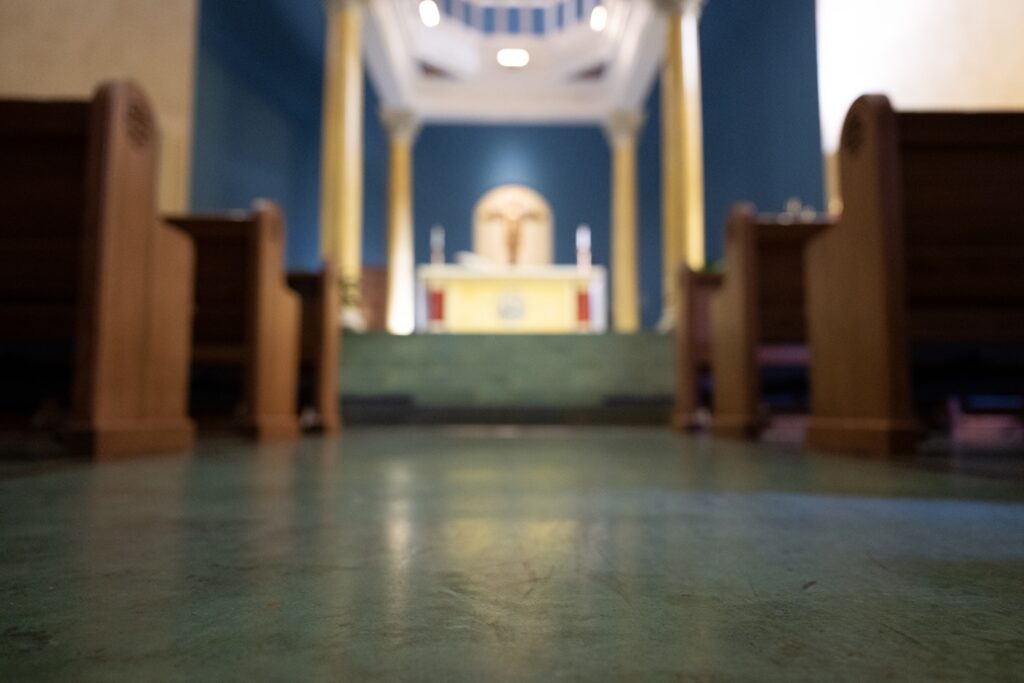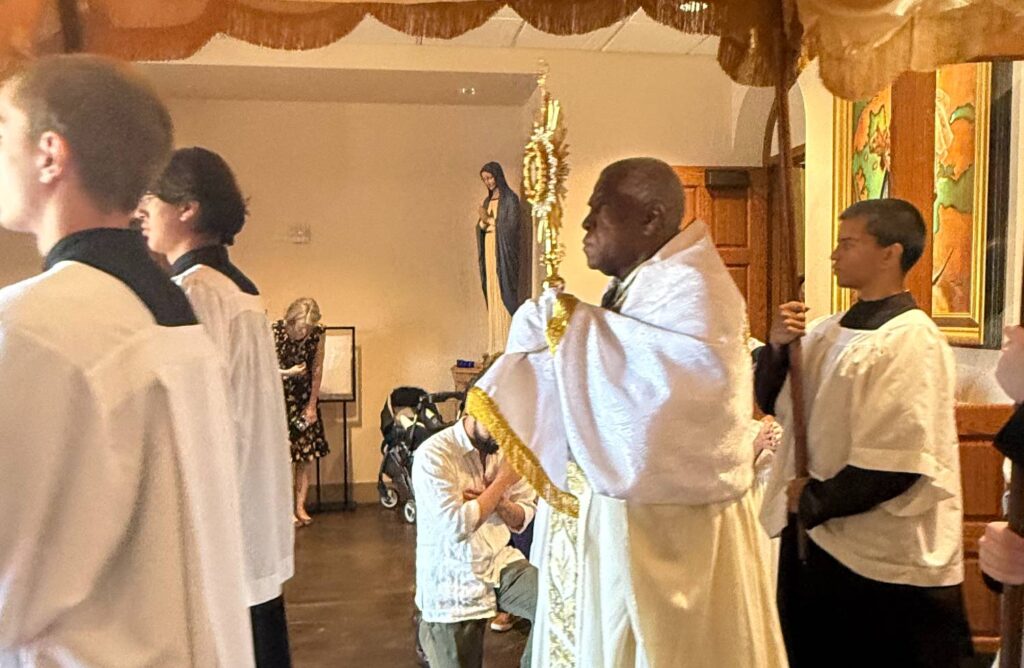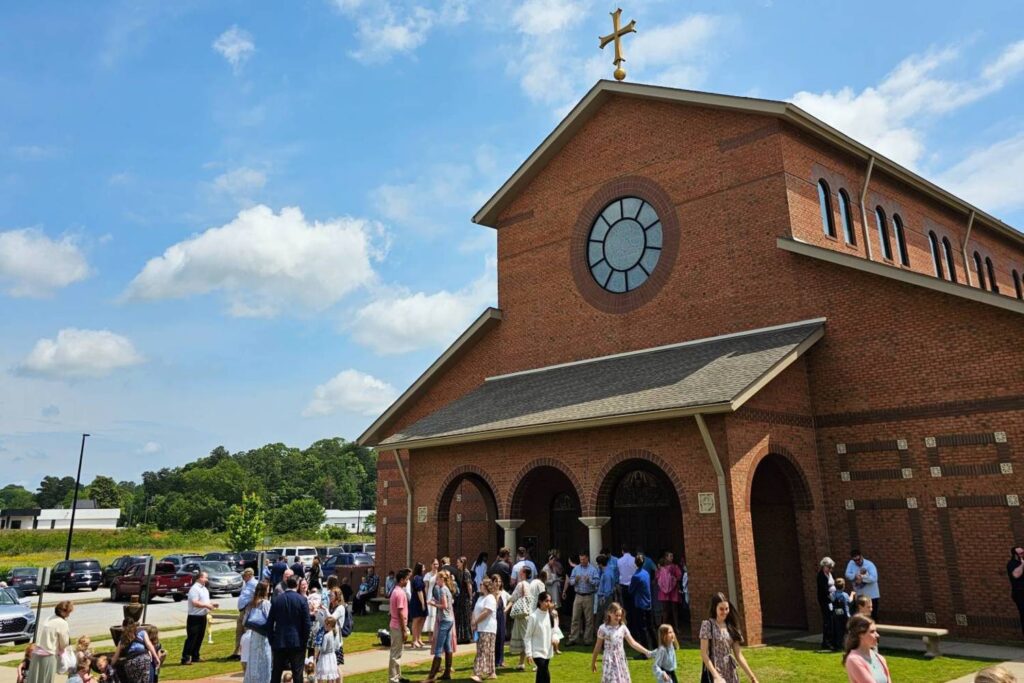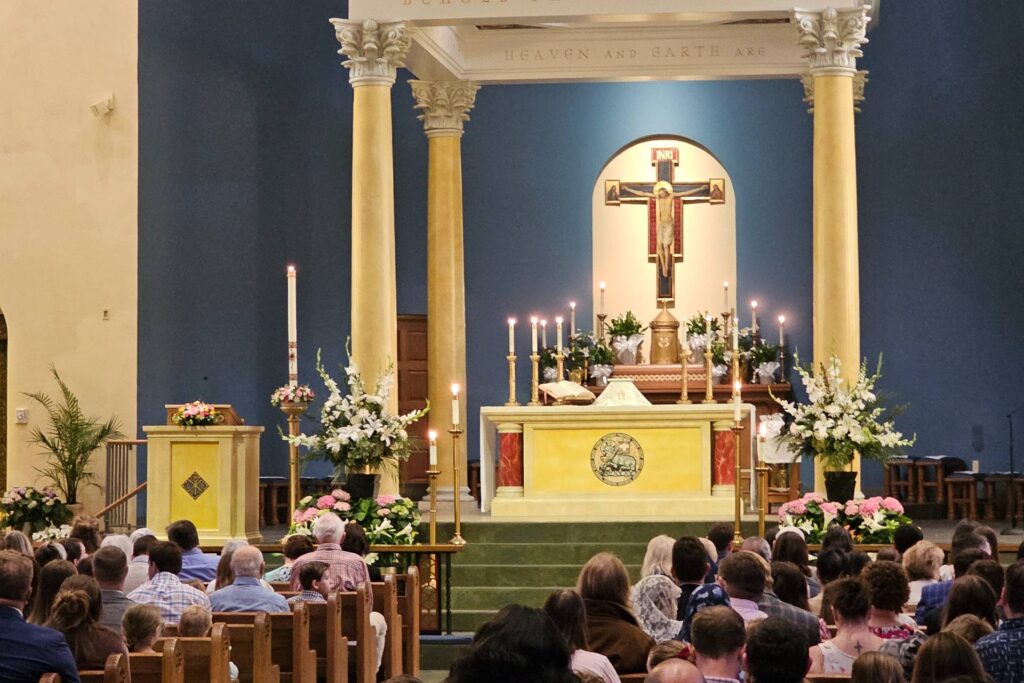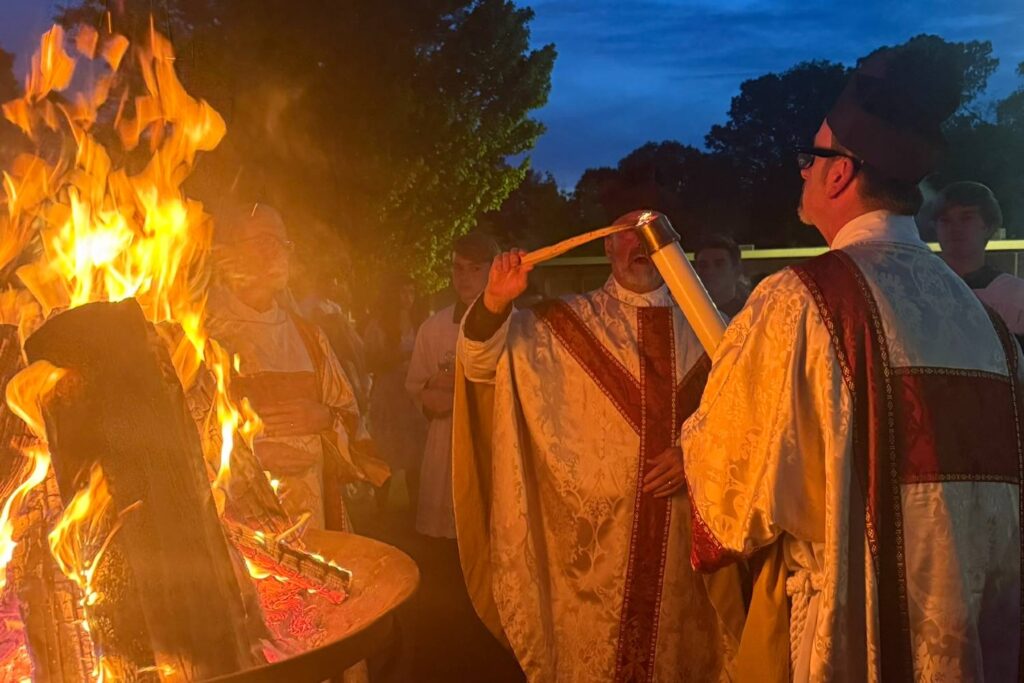Brothers and Sisters,
During May my pastor’s letters will focus on different aspects of the liturgy, hoping that by understanding in more depth we will deepen our love for the Lord in our regular worship. This week a summary of a recent article I wrote about traditional worship being a “compendium of culture.”
The new Our Lady of the Rosary Church in Greenville draws together a wealth of Catholic art and architecture, and when we celebrate high Mass at 10:30 on Sunday mornings the building surges with a beautiful combination of virtually every art form. First there is the architecture: The Romanesque style flowered first just after the decline of the Roman Empire, with its round arches, soaring height and solid pillars, it developed naturally from the architecture of Rome herself, and is thus a living link with Roman history and culture. We insisted on the lofty height of the interior because verticality lifts our hearts and minds on high.
We spent time and money filling our new church with various examples of traditional Catholic art. The stained glass windows —from the famed Wilbur Burnham studios— were salvaged from a church in Massachusetts and installed in the new OLR. Jim Craft—a member of our congregation created the low-relief, ceramic tympani over the doors. Our set of antique stations of the cross were professionally restored by the same artist who painted the cherubim and the starry dome in the ceiling of the baldacchino.
Statues of the Blessed Virgin, St Joseph, St Benedict, St Francis and the angels were salvaged, restored and given pride of place. The copy of a painting from the Vatican museum painted by a local artist is in the narthex. Behind the high altar is a hand painted English, nineteenth century crucifix in the style of Duccio which we discovered in an antique shop in Utah. In the floor and on the high altar are mosaics from a workshop in Jordan. The antique font—also from the church in Massachusetts– is a fine example of marble work, and the cover, bronze metalwork.
Sacred music is abundant with our fine pipe organ and various choirs.
Where are the other cultural art forms? Literature is there as the Scriptures are read. Poetry is represented by the psalms and the lyrics to the fine old hymns we choose. Rhetoric and logic are displayed in the homily.
The sacred vessels and altar ware exhibit traditional metalwork skills. The textile arts are featured in the good vestments. Bookbindery is there in the missals and prayerbooks we use, and even the kneelers and furniture show forth the skill of the woodworker and upholsterer.
Is there an art form that is missing from this compendium of culture? Dance perhaps, but there is even an echo of that in the formalized, ritual actions—almost choreographed—of the clergy and altar servers as they move in the sanctuary.
Why does this matter? It matters because matter matters. The foundation of the Christian faith is the incarnation of God’s Son who took flesh of the Blessed Virgin. St Paul says of Jesus Christ that he is the “image (icon) of the unseen God.” Consequently, all of the created order is blessed and redeemed and we are called, according to our gifts, to be co-creators with God. This creative artistic endeavor is nowhere more integrated and directed to God’s glory than when it is dedicated to divine worship. In traditional Catholic worship all these artistic elements not only work together, but each is submissive to the higher aim of the glory and worship of God.
Art does this. The apprehension of beauty transports the body, mind and spirit to the source of all that is beautiful, good and true. Furthermore, what astonishes and moves me as we worship in our beautiful church day by day and week by week, is that this compendium of culture is not for the elite or those with a PhD in art history. It is available and accessible to all.
In a traditional church we live with this art, architecture, music, literature, sculpture and stained glass. Each week our school children are immersed in this compendium of culture as they come into church for our school Mass. Every day and every Sunday “ordinary folk” are there (as they should be) not gawking at these wonders as one does in an art gallery, but living with them, worshipping with them and praying surrounded by them.
Your Pastor,
Fr. Longenecker
